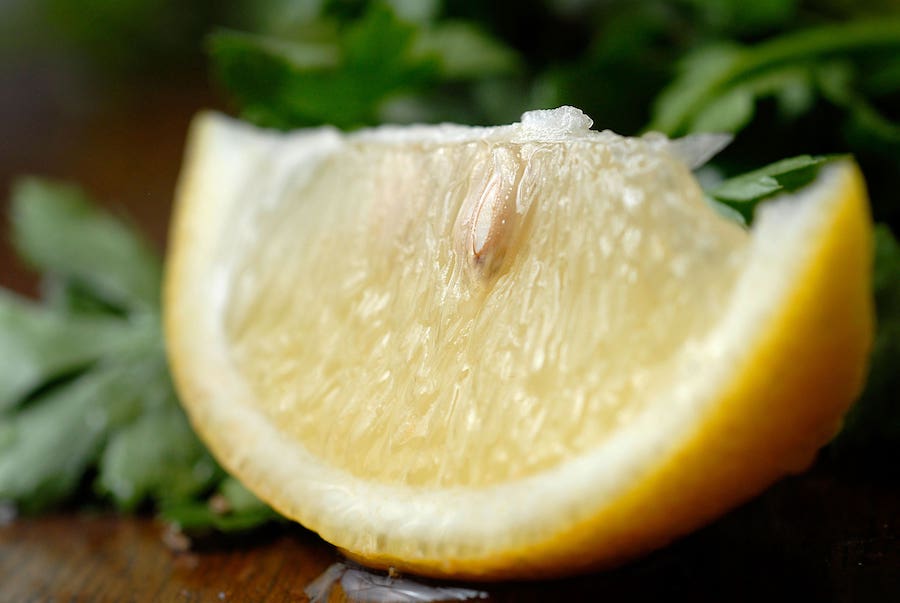Can you grow a lemon tree from a pip? The beginner gardening questions we all want to ask
These common conundrums leave many beginner gardeners perplexed
Ever wondered whether you could grow a citrus tree from a pip, or revitalise a shop-bought pot of herbs, or if slugs will come back if you chuck them over the garden fence?
You’re not alone. Here, experts answer five conundrums which frequently leave beginner gardeners scratching their heads…
1. Can you grow a lemon tree from the pip of a supermarket lemon?
View this post on Instagram
Yes – and it’s quite easy, says Emma O’Neill, head gardener at the charity Garden Organic.
“First, take out the pips from the lemon and wash away any debris. Float in warm water for 10 minutes to see if it’s a viable seed. If it sinks, it’s viable. This also helps to soften the seed, which will aid germination. The lemon seed will germinate in a pot of organic peat-free compost on a warm windowsill,” says O’Neill.
“However, for a lemon tree to grow successfully in this country it will need specific requirements. Citrus trees like a soil pH of 6 to 7.5 so you’re best growing them in a container so you can control the compost mix. They also need temperatures of 21-30C in the day and 13C at night, so you will need to move them into a conservatory or warm, bright room in the autumn and winter to protect them.”
Guy Barter, RHS chief horticulturist, adds: “They make strong green plants but notoriously can take many years to flower and fruit. They can be too large for some windowsills and can be pruned as required, but this will delay flowering further.”
2. What’s the best way to get rid of slugs and snails?
O’Neill says: “You could walk your slugs off site to a park or canal side, where they will be unlikely to return to your garden and will form part of the food chain for other creatures.
“But organically, we don’t like to get rid of them and instead manage them as part of the garden ecosystem. Slugs eat decaying organic matter and are particularly useful in the compost heap. I would suggest attracting natural predators such as frogs, toads and birds to help you mop any excess.”
Barter adds: “Discarding unwanted molluscs over the garden fence is often futile, as they can slime their way back from as far away as 60m. Also, removing molluscs from an area is usually followed by swift re-invasion.
“Avoiding growing vulnerable plants such as hosta and petunia, and encouraging predators such as frogs and slow-worms are sensible solutions in mollusc-ridden gardens.”
3. Can you grow your own herbs from a pot of supermarket herbs?
View this post on Instagram
Yes you can, by dividing them and planting them up into organic peat-free compost, O’Neill advises.
“However, you must consider that these plants have not had the best start, so can often produce weak plants. The herbs are overcrowded into pots, travel long distances, come in lots of packaging and may have been sprayed with pesticides.”
Barter adds that, having been grown in high tech greenhouses that cover most aspects of climate, given artificial light and a solution of plant food, they may not adapt well to regular surroundings.
“They are vulnerable when transferred to the less optimal domestic environment, where even in summer conditions are challenging and in winter can quickly prove lethal.
“Nevertheless, by providing good light, applying some – but not much – fertiliser, avoiding over watering, dividing the congested seedlings and repotting into peat-free potting compost sold for indoor plants, the delicate herbs can pull through, particularly if a bright and not too warm windowsill or conservatory is available.”
4. How do I get rid of moles in my garden?
View this post on Instagram
O’Neill says: “It’s difficult. You can use electronic deterrents and repellents – but we prefer to see them as part of the greater biodiversity of the garden. The soil on top of mole hills also makes a beautiful potting compost!”
Gardening broadcaster, writer and lecturer Pippa Greenwood adds: “Go down the repellent routes rather than mole traps. Try things like caper spurge plants growing in the vicinity of the moles, or toy windmills inserted in the soil. I found the best thing was to have lots of small children running about in the garden!”
Barter advises: “Although much effort has been expended get rid of these little velvety creatures, they are part of a healthy garden ecosystem and such harsh measures are disproportionate, and in any case another mole usually quickly moves in. Some professional mole catchers offer a live capture and rehoming service.”
5. How do I know if I’m overwatering my houseplant?
Signs your plants are being overwatered are wilting or yellowing leaves, a bad smell from the compost, and an increase in sciarid flies that prefer moist conditions, says O’Neill.
“Learn the water regime for your specific plants. Many houseplants require higher humidity, while others like a drying out period between waterings. I always use the finger test to see if they are dry. Stick your finger a few centimetres into the compost to see if it is damp further down. If it is, leave watering for another day.
“Watering into a saucer is much better for the plant because it allows them to take up water when they need it. Wait half an hour and if there’s any left, pour this on the garden. Always use a small can so you’re not flooding the plant with water each time.”
The Press Association
Latest posts by The Press Association (see all)
- William and Kate celebrate 13th wedding anniversary - April 29, 2024
- Dame Kelly Holmes: ‘Getting old is a privilege but ageing I don’t like’ - April 27, 2024
- 9 of the most iconic dance scenes in movies - April 27, 2024
- Why is melanoma on the rise? As new personalised ‘gamechanger’ skin cancer jab is tested - April 27, 2024
- King to resume public duties after positive cancer treatment - April 26, 2024





















